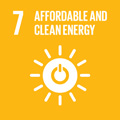- Docente: Lamberto Tronchin
- Credits: 8
- SSD: ING-IND/11
- Language: Italian
- Moduli: Lamberto Tronchin (Modulo 1) Valerio Tarabusi (Modulo 2)
- Teaching Mode: Traditional lectures (Modulo 1) Traditional lectures (Modulo 2)
- Campus: Cesena
- Corso: Single cycle degree programme (LMCU) in Architecture (cod. 9265)
-
from Sep 25, 2024 to Nov 22, 2024
-
from Nov 27, 2024 to Dec 13, 2024
Learning outcomes
Thermo-dynamics, Thermo-hygrometry, energy heat transfer, acoustics, lighting, Indoor Air Quality
Course contents
The Course is divided into 2 Modules (6 + 2 CFU)
1 Module Thermodynamics
Introduction to Thermodynamics. System of units.
Principle zero of Thermodynamics. Thermometry. First principle of Thermodynamics for closed systems. Second principle of Thermodynamics for closed systems:
statement by Kelvin-Planck, Clausius and their equivalence.
The Carnot machine. Entropy and lost work. The maximum work. Mass balance for open systems.
Energy balance for open systems. Practical examples. The Gibbs rule.
Saturated vapours. Thermodynamic diagrams.
Rankine cycle. Air and vapour mixtures.
Description of air and vapour mixtures. Psychrometric transformations.
Thermal comfort and indoor air quality
Principles of thermal comfort. The thermal confort equation. The theory of Fanger. PMV and PPD. Olf and decipol; IAQ and PPD.
Lightings:
Principles of lightings. Indoor lighting. Natural and artificial lighting.
Fundamentals of acoustics.
The basic equations. Acoustic pressure and velocity. Sound speed. The decibel. Properties of dB. Frequency analysis. White and Pink noise. Sound insulation. Sound absorption. Sound propagation in enclosures. Reverberation time. The Impulse Response. Other acoustic parameters
2 Module Heat transfer
Conduction. Fourier law. Fourier equation. Steady state solutions: plane layer, cylindric layer.
Critical radius. Electric analogy and its limits. Measurement of thermal conductivity.
Materials for the thermal insulation.
Convection. Coefficient of convection. Dimensional analysis and similarity. Forced, natural and mixed convection.
Radiation. Basic definitions. Black and grey bodies. Laws of Stefan-Boltzmann, Planck, Wien, Lambert, Kirchhoff, Prevost. Energy exchange between surfaces.
Combined heat transfer. Global coefficient of heat transfer.
Final dissertations.
Some aspects of thermal characteristics of buildings. Energy performance of Buildings. Acoustic characteristics of room. Acoustic design in theatres and auditoriaReadings/Bibliography
Teaching methods
For further information please go to: http://www.fistecamb.com/Courses/course-012.htm
Assessment methods
The assessment will consist of an oral exam. The student will be asked to discuss about thermodynamics, heat transfer and environmental techniques. One question will consist on a simple exercise already discussed during the lectures. Una tantum, written exam at the end of the course for those who attend regularly the course. The final grade will be the sum between: clarity during exposition (up to 10); knowledge of the arguments (up to 10); precision during the exposition (up to 10).
It will be considered as excellent (grade 27-30) the answers given by students in an organic way, including a very detailed description of the argument of the questions, with a high level of scientific language.
It will be considered as discrete (grade 23-26) the answers given by the students without any specific in-deep analysis of the topics, with a medium level of scientific language.
It will be considered as sufficient (grade 18-22) the answers given by students which include only a limited description of the topics, with a minimum level of scientific language.
It will be considered as not sufficient the answers which include several errors and unclear comprehension of the topics of the course.
Teaching tools
For further information please go to:
http://www.fistecamb.com/Courses/course-012.htm
Office hours
See the website of Lamberto Tronchin
See the website of Valerio Tarabusi
SDGs




This teaching activity contributes to the achievement of the Sustainable Development Goals of the UN 2030 Agenda.
